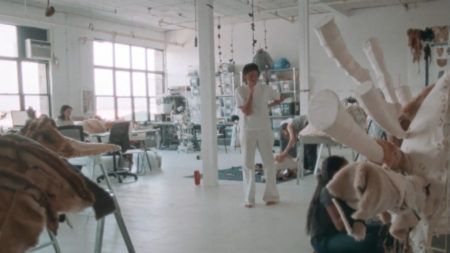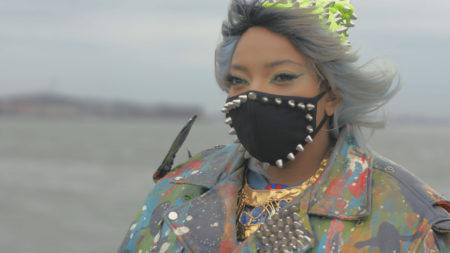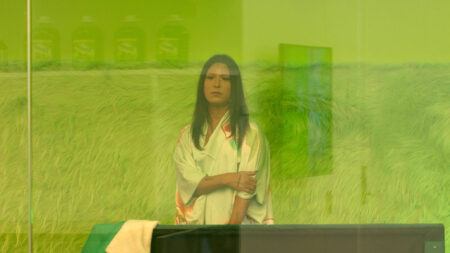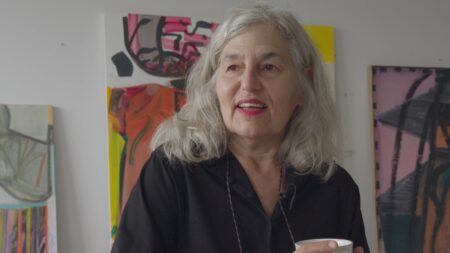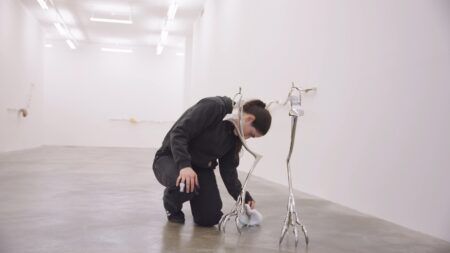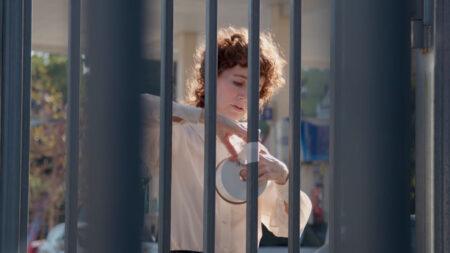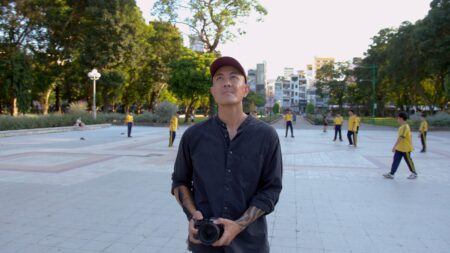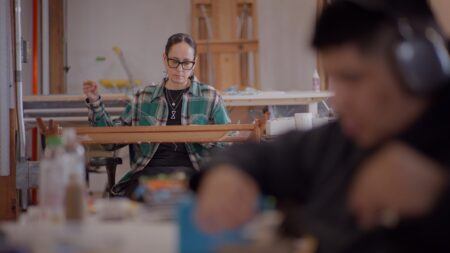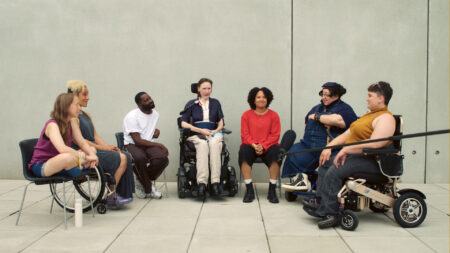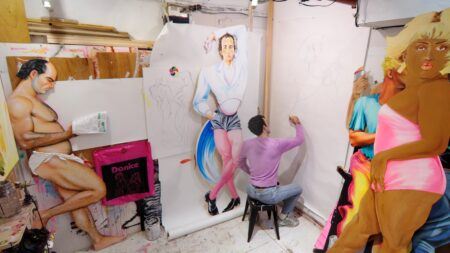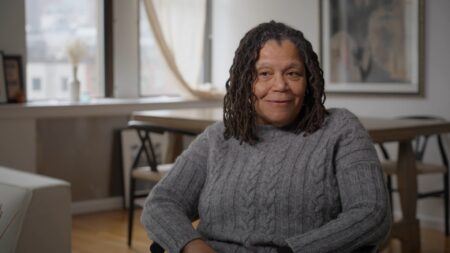Continue playing
(Time remaining: )
Play from beginning
Continue playing "{{ controller.videos[controller.getVideo(controller.currentVideo)].segmentParentTitle}}"
{{controller.videos[controller.getVideo(controller.currentVideo)].title}} has ended.
Doreen Garner on Her Own Terms
Visit our Awards page for this film’s honors and recognition.
How do we get the skin tone right? From her Brooklyn studio to international art fairs to a Juneteenth barbecue, sculptor and tattoo artist Doreen Garner navigates two very different communities—the highly public, collector-driven world of galleries and museums and the private, deeply interpersonal world of client tattooing—carefully carving out space for creative fulfillment and emotional self-care.
Working in the intensely political climate of the COVID-19 pandemic and the ongoing unrest sparked by the murder of George Floyd, Garner takes a hard look at some of the most basic assumptions of her practice and the art market in which her work circulates. While Garner’s past works featured silicone fragments of Black bodies to address the traumatic histories that Black people have endured, the artist is now at work in her Sunset Park studio on a series of new sculptures that depict white flesh. Exploring disease, toxicity, and the legacy of the Atlantic slave trade for an upcoming exhibition in Europe, the artist states, “I don’t want to put bloody Black bodies by themselves as entertainment. I want [audiences] to think about ways that their whiteness adds to racism experienced across the globe, regardless of whether they think that they’re involved or not.” Garner is all too aware of the contradiction between her creative dedication to making tonally realistic white flesh and a lifetime witnessing the ways Black bodies have been aesthetically misrepresented by white creators. This deep disparity of care is mirrored in the reception of Garner’s work, as she notes that her sculptures of Black bodies have sold more rapidly on the art market than her sculptures of white bodies.
Discomforted by the racial dynamics at play and the inevitable cycles of acceptance and rejection in the art world, Garner turns to tattooing for a sense of personal affirmation and community. A licensed tattoo artist, Garner draws upon Black American heroes and imagery in her tattoos, rejecting the typical imagery of a traditionally white male industry. From her Brooklyn studio, Garner tattoos her friend and fellow tattoo artist, Debbi Snax, enjoying the freedom of working one-on-one with clients who are often unaware of her fine arts practice. For Garner, her tattoo works are also unique but accessible art objects that a wide array of people can collect. As she visits Luna Park in Coney Island with Debbi and throws a Juneteenth picnic in Prospect Park for tattooed friends and clients, Garner’s communal, uplifting vision of her tattoo practice becomes clear. “I’m just trying to create the images that Black people want to get on their body forever,” says the artist, “Things they resonate with and things that make them feel beautiful.”
Credits
New York Close Up Series Producer: Nick Ravich. Director: Naima Ramos-Chapman. Editors: Ephraim Kirkwood and Nadine Mundo. Additional Editors: Alexander Mejia and Carlos Galek Sefchovich. Camera: Harold Erkins, Alexander Mejia, and Naima Ramos-Chapman. Sound: Edwin Diagon and Carlos Galek Sefchovich. Production Assistant: Suzette Burton. Music: Akeema-Zane. Color Correction: Addison Post. Sound Design & Mix: Gisela Fullà-Silvestre. Design & Graphics: Chips. Artwork Courtesy: Doreen Garner. Thanks: Azikiwe Aboagye, Francis Agyapong, Chashama, Tichina Collins, Oasa DuVerney, Halle Fur Kunst Steiermark, JTT Gallery, Lita Lofton, Brian Redondo, Debbi Snax, Jasmin Tsou, and Zach Wampler.
New York Close Up is supported by The Andy Warhol Foundation for the Arts; and, in part, by public funds from the New York City Department of Cultural Affairs in partnership with the City Council; Dawn and Chris Fleischner; and by individual contributors.
Digital exhibition of New York Close Up films is made possible in part by the New York State Council on the Arts.
Closed captionsAvailable in English, German, Romanian, Italian, Japanese, Korean, Chinese, Italian
Through the Art21 Translation Project, multilingual audiences from around the globe can contribute translations, making Art21 films more accessible worldwide. Translate this video now.
Interested in showing this film in an exhibition or public screening? To license this video please visit Licensing & Reproduction.
KING COBRA (documented as Doreen Lynette Garner) was born in 1986 in Philadelphia, Pennsylvania. She lives and works in Brooklyn, New York. Assertively reclaiming power, COBRA’s work confronts viewers, challenging them to consider their complacency in systems of objectification, racism, false narratives, and historical omissions while commemorating those who have been subjected to enslavement, medical torture, and racial oppression.
“I don’t want to put a bunch of bloody Black bodies just by themselves as entertainment. I want [viewers] to think about ways that their whiteness adds to racism experienced throughout the globe, regardless of whether they think that they’re involved or not.”
Doreen Garner






